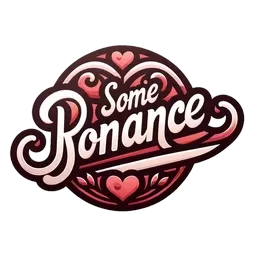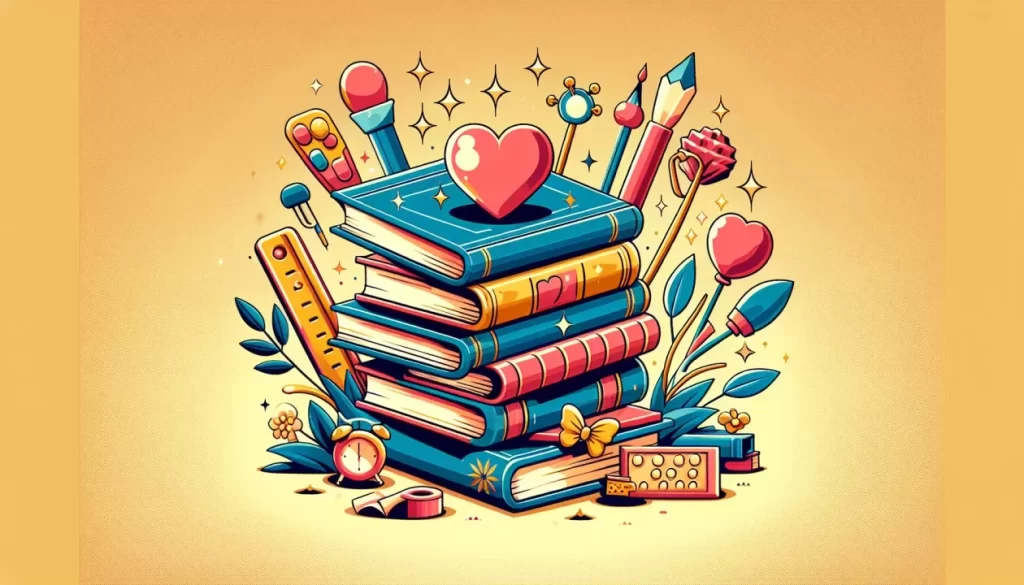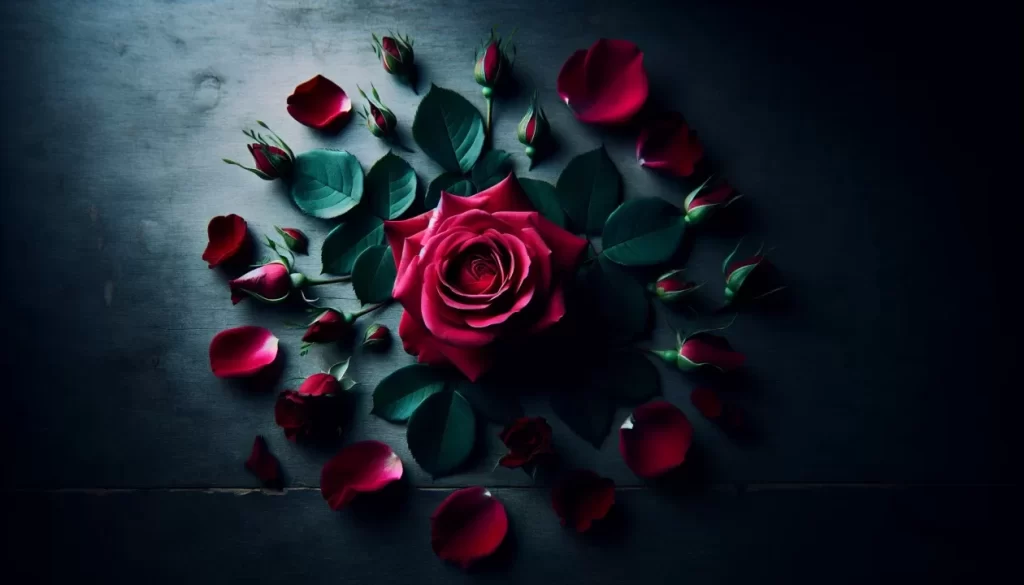Step into the enchanting world of Historical Romance Novels and be transported to a time of chivalry, passion, and breathtaking love stories. From opulent ballrooms to rugged landscapes, these captivating books whisk you away to eras filled with intrigue, adventure, and unforgettable romance. Lose yourself in the pages as powerful lords and spirited heroines navigate the complexities of forbidden desires, societal expectations, and timeless devotion. Let your heart be swept away by these tales that transcend time and indulge in the excitement and beauty of historical romance.
1. Historical Background
Historical romance novels transport readers to different time periods, providing a window into the past and offering a unique blend of historical accuracy and romantic storytelling. From medieval settings to the Regency era to the tumultuous times of World War I and II, these novels have captured the hearts of readers for centuries.
1.1 Medieval Era
The medieval era, spanning from the 5th to the 15th century, is a popular backdrop for historical romance novels. This period is characterized by castles, knights, and chivalry. It was a time of great societal change, and novels set in this period often explore themes of love, honor, and duty. Authors delve into the intricacies of courtly life, the struggle for power, and the adventures of knights and damsels.
1.2 Victorian Era
The Victorian era, which took place from 1837 to 1901, is another popular setting for historical romance novels. This period was marked by rapid industrialization and significant societal changes. Novels set in the Victorian era often touch on themes of class division, the constraints placed on women, and the tension between tradition and progress. The elaborate fashion, strict social norms, and etiquette of the time provide a rich backdrop for romance and conflict.
1.3 Regency Era
The Regency era, which lasted from 1811 to 1820, is defined by the reign of George IV as Prince Regent in England. This period is known for its elegance and refinement, with strict societal rules and expectations. Regency romance novels often showcase the lives of the upper class, exploring themes of love, courtship, and the search for a suitable marriage partner. It was an era of grand balls, intricate manners, and intricate courtship rituals.
1.4 World War I and II
The World War I and II periods offer a different set of historical events to explore in romance novels. These eras are marked by wartime experiences, separated lovers, and the impact of war on everyday lives. Authors often weave love stories into the backdrop of war, showcasing courage, resilience, and the power of love to overcome even the most challenging circumstances. Historical accuracy is crucial in these novels, as authors strive to capture the emotions and realities of war.
2. Elements of Historical Romance Novels
Historical romance novels are enriched by a variety of elements that contribute to their immersive and captivating nature. These elements combine to create vivid settings, memorable characters, and compelling storylines.
2.1 Setting and Time Period
One of the defining elements of historical romance novels is the choice of setting and time period. Authors meticulously research and recreate the details of these past eras, immersing readers in a world defined by its unique customs, landscapes, and societal structures. The accuracy and authenticity of the setting contribute to the overall believability and charm of the story.
2.2 Historical Events and Context
In historical romance novels, the chosen time period often coincides with significant historical events. Authors skillfully weave these events into the narrative, providing context and depth to the story. Whether it’s the political unrest of medieval times or the impact of industrialization in the Victorian era, historical events add an extra layer of authenticity and intrigue.
2.3 Social Hierarchy
Social hierarchy is another crucial element in historical romance novels. Authors explore the rigid class divisions and social expectations of the past, highlighting the challenges faced by protagonists who dare to defy societal norms. The tension between the desire for love and the constraints imposed by social status creates compelling conflicts and obstacles for characters to overcome.
2.4 Fashion and Decor
The fashion and decor of a specific time period play a significant role in historical romance novels. Descriptions of elaborate ball gowns, dashing attire, and opulent settings transport readers to a bygone era. These details not only enhance the visual aspect of the story but also provide insight into the societal norms, values, and aspirations of the characters.
2.5 Relationships and Marriage
Romantic relationships and the institution of marriage are central themes in historical romance novels. The social expectations and constraints surrounding courtship and marriage in the past serve as a backdrop for the development of relationships. Authors explore the complex dynamics between characters, delving into themes of love, duty, and personal fulfillment. The exploration of these themes within the historical context adds depth and resonance to the story.
3. Popular Themes in Historical Romance Novels
Historical romance novels often revolve around specific themes that resonate with readers and add depth to the storyline. These themes delve into universal human experiences, while also showcasing the unique challenges and complexities of the chosen time period.
3.1 Forbidden Love
Forbidden love is a timeless theme that has captivated readers throughout history. In historical romance novels, this theme is often explored within the context of societal expectations and constraints. Whether it’s a love affair between members of different classes, a secret romance in a time of war, or a relationship deemed unacceptable by society, forbidden love adds emotional intensity and tension to the story.
3.2 Rags to Riches
The rags to riches theme is a popular trope in historical romance novels. It follows the journey of a character from a humble or disadvantaged background to achieving wealth, status, or both. This theme showcases the resilience, determination, and personal growth of the protagonist, providing a satisfying arc to the story. It also allows for exploration of class divisions and societal mobility during a specific time period.
3.3 Arranged Marriages
Arranged marriages were common in many historical periods, and this theme is often explored in historical romance novels. These novels delve into the complexities and challenges faced by characters forced into arranged marriages. They often showcase the tension between duty and personal desires, as characters navigate their way through societal expectations, family obligations, and the search for true love.
3.4 Love Triangle
Love triangles are a staple in romance novels, and historical romance is no exception. This theme adds emotional turmoil, conflict, and unpredictability to the story. Whether it involves the choice between duty and love or two equally compelling suitors, love triangles provide a source of tension and suspense for readers, keeping them engaged and invested in the outcome.
3.5 Second Chances
Second chances are a popular theme in historical romance novels, often involving characters who have experienced heartbreak, loss, or missed opportunities. These stories allow for personal growth, redemption, and the possibility of finding love again. Second chance romances provide a sense of hope and optimism, tugging at the heartstrings of readers who root for the protagonists to overcome their past and find happiness.
4. Typical Protagonists in Historical Romance Novels
Historical romance novels feature a wide variety of protagonists, each with their own distinct qualities and challenges. These characters help bring the story to life and provide readers with relatable and compelling perspectives.
4.1 Strong-willed Heroines
Strong-willed heroines are a common archetype in historical romance novels. These women defy societal norms and expectations, often challenging the gender roles of their time. They possess intelligence, courage, and determination, and they refuse to accept the limitations placed on them. Strong-willed heroines add depth and complexity to the story, embodying the spirit of female empowerment.
4.2 Handsome and Charming Heroes
Handsome and charming heroes are a staple of historical romance novels. These male protagonists are typically characterized by their physical attractiveness, charisma, and honorable nature. They are often depicted as knights, gentlemen, or heroes who possess a strong sense of duty, as well as a passionate and romantic side. These appealing heroes are designed to captivate the hearts and imaginations of readers.
4.3 Disguised Characters
Disguised characters add an element of intrigue and suspense to historical romance novels. Whether it’s a noblewoman masquerading as a servant or a spy operating under a false identity, these characters introduce an air of mystery and adventure. The disguise allows for unexpected interactions and hidden identities, creating opportunities for both romantic and plot twists.
4.4 Damsels in Distress
Damsels in distress are a classic trope in romance novels, including those set in historical periods. These characters often find themselves in perilous situations and require rescuing. While this trope has faced criticism for perpetuating passive and helpless female characters, it still appears in historical romance novels, albeit in a more nuanced manner. Modern authors strive to create strong, independent, and proactive characters who may find themselves in dire circumstances but work to save themselves and make their own decisions.
5. Notable Historical Romance Novel Authors
Historical romance novels have been written by countless talented authors throughout history. Here are five notable authors who have made a significant impact on the genre:
5.1 Jane Austen
Jane Austen is often regarded as the queen of historical romance novels. Her works, such as “Pride and Prejudice,” “Sense and Sensibility,” and “Emma,” have become timeless classics. Austen’s keen observations of society, sharp wit, and compelling characters have made her novels enduring favorites among readers.
5.2 Georgette Heyer
Georgette Heyer is known for her historical romance novels set in the Regency era. Her meticulous attention to detail, witty dialogue, and engaging plots have made her a beloved author in the genre. Heyer’s books, such as “The Grand Sophy” and “Frederica,” continue to entertain readers with their vibrant and charming characters.
5.3 Diana Gabaldon
Diana Gabaldon’s “Outlander” series has captivated millions of readers around the world. Blending elements of historical fiction, romance, and time travel, Gabaldon’s novels transport readers to 18th-century Scotland. Her intricate storytelling, well-researched historical background, and complex characters have earned her a devoted fan base.
5.4 Philippa Gregory
Philippa Gregory is known for her historical fiction novels, many of which incorporate elements of romance. With works like “The Other Boleyn Girl” and “The White Queen,” Gregory has brought to life the stories of powerful women in history. Her attention to historical accuracy and ability to create compelling narratives make her a notable author in the genre.
5.5 Lisa Kleypas
Lisa Kleypas is a bestselling author known for her historical romance novels, particularly those set in the Regency era. Her books, such as “Devil in Winter” and “Dreaming of You,” are beloved by readers for their passionate romances, engaging characters, and rich historical detail. Kleypas’ ability to create emotional depth and deliver satisfying happily-ever-afters has made her a favorite among fans.
6. Impact and Popularity of Historical Romance Novels
Historical romance novels have had a profound impact on both readers and popular culture. Their popularity has only grown throughout the years, attracting a wide readership and influencing various aspects of media and society. Here are some key aspects of their impact:
6.1 Historical Accuracy Debate
The historical accuracy of romance novels has been a subject of debate among readers and scholars. While authors strive to research and depict the past as accurately as possible, there may be instances where creative liberties are taken for the sake of storytelling. Critics argue that historical romance novels may trivialize or oversimplify historical events and societal norms. However, many authors make an effort to maintain a balance between historical accuracy and creating a compelling story that resonates with readers.
6.2 Female Empowerment
Historical romance novels often feature strong-willed heroines who defy societal norms and expectations. These characters serve as inspiration for readers, showcasing courage, independence, and resilience. The portrayal of empowered female protagonists encourages readers to explore their own strength and challenges traditional gender roles. Historical romance novels have played a significant role in promoting female empowerment within the genre and beyond.
6.3 Influence on Media and Culture
Historical romance novels have had a notable influence on other forms of media, including film, television, and even music. Many beloved romance novels have been adapted into successful films and TV series, attracting a broader audience. Additionally, elements of historical romance can be found in popular culture, fashion, and even wedding trends. These novels have shaped the way we perceive and consume historical narratives, leaving a lasting impact on popular culture.
6.4 Sales and Readership
The popularity and demand for historical romance novels remain strong, making them a significant part of the publishing industry. These novels consistently rank among the bestsellers, attracting a dedicated and diverse readership. The timeless appeal of historical romance, combined with the variety of subgenres and themes, ensures that there is a book for every reader. Despite evolving trends and changes in the publishing landscape, historical romance novels continue to thrive and captivate readers around the world.
7. Criticisms and Misconceptions about Historical Romance Novels
Like any genre, historical romance novels are not without their critics and misconceptions. It’s important to address these concerns and explore the limitations and challenges that can arise within the genre.
7.1 Trivialization of History
One common criticism of historical romance novels is the potential trivialization of historical events and societal issues. Critics argue that focusing on love and romance may overshadow or simplify complex historical contexts. However, many authors strive to strike a balance between historical accuracy and engaging storytelling, ensuring that the romantic elements enhance, rather than detract from, the historical backdrop.
7.2 Predictable Plots
Another misconception about historical romance novels is that they always follow predictable plots. While the genre does have certain tropes and expected outcomes, skilled authors find ways to subvert expectations, introduce twists, and create unique narratives. Despite the familiar themes, historical romance novels can surprise readers with compelling characters and captivating storylines.
7.3 Negative Stereotypes
Historical romance novels have sometimes been criticized for perpetuating negative stereotypes. Critics argue that some novels reinforce sexist or outdated beliefs about gender roles and romantic relationships. However, modern authors work to create characters who challenge these stereotypes, portraying empowered heroines and respectful, emotionally intelligent heroes. The genre has evolved to address these concerns and offer more inclusive and progressive narratives.
7.4 Limitations of Diversity
Historical romance novels set in specific time periods may face challenges related to diversity and representation. The historical context often limits the inclusion of characters from marginalized backgrounds. However, many authors make efforts to incorporate diverse perspectives, exploring the experiences of characters who may have been overlooked by history. Historical romance novels continue to evolve, striving for greater inclusivity and representation.
8. Adaptations of Historical Romance Novels
The enduring popularity of historical romance novels, combined with their captivating stories, has made them a natural source for adaptations in various forms of media.
8.1 Film and Television Adaptations
Many popular historical romance novels have been adapted into successful films and TV series. These adaptations bring the stories and characters to life on screen, allowing audiences to visually experience the vibrant settings and passionate romances. From Jane Austen adaptations like “Pride and Prejudice” to the recent hit series “Outlander,” these adaptations offer a new way for fans to connect with their favorite novels and introduce new audiences to the allure of historical romance.
8.2 Fan Fiction and Online Communities
Historical romance novels have also found a home in the world of fan fiction and online communities. Fans of the genre create their own stories, exploring alternative plotlines, character interactions, and romantic pairings. Online platforms and forums provide a space for readers to discuss their favorite novels, share recommendations, and engage with authors. This vibrant online community allows fans to deepen their love for historical romance novels and connect with like-minded individuals.
9. Popular Historical Romance Novels
Historical romance novels have produced numerous popular and beloved titles over the years. Here are three notable examples:
9.1 Pride and Prejudice by Jane Austen
Jane Austen’s “Pride and Prejudice” is widely regarded as one of the greatest works of literature. The novel tells the story of Elizabeth Bennet and Mr. Darcy, capturing the complexities of love, class, and societal expectations in Regency-era England. The timeless love story, richly drawn characters, and witty social commentary have made it a favorite among readers for generations.
9.2 Outlander by Diana Gabaldon
Diana Gabaldon’s “Outlander” is a sweeping tale of time travel, romance, and adventure. Set in 18th-century Scotland, the novel follows Claire Randall, a modern-day nurse who finds herself transported back in time. Her journey intertwines with that of Jamie Fraser, a passionate Highlander. “Outlander” deftly combines historical detail, vivid storytelling, and a captivating love story that has won over countless readers worldwide.
9.3 The Duke and I by Julia Quinn
Julia Quinn’s “The Duke and I” is the first book in her beloved Bridgerton series. Set in Regency-era England, the novel introduces readers to the Bridgerton family and the romantic pursuits of its members. The story focuses on the reluctant alliance between Daphne Bridgerton and Simon, the Duke of Hastings. With its charming characters, witty dialogue, and enchanting love story, “The Duke and I” has become a favorite among historical romance fans.
10. Conclusion
Historical romance novels continue to captivate readers with their unique blend of history and romance. Through meticulous research and compelling storytelling, authors transport readers to different time periods, bringing them into the lives of vibrant characters and the complexities of love and society. These novels explore various themes, depict memorable protagonists, and have a lasting impact on readers and popular culture. Whether through their historical accuracy, empowering characters, or engaging narratives, historical romance novels have secured their place as a beloved genre.


